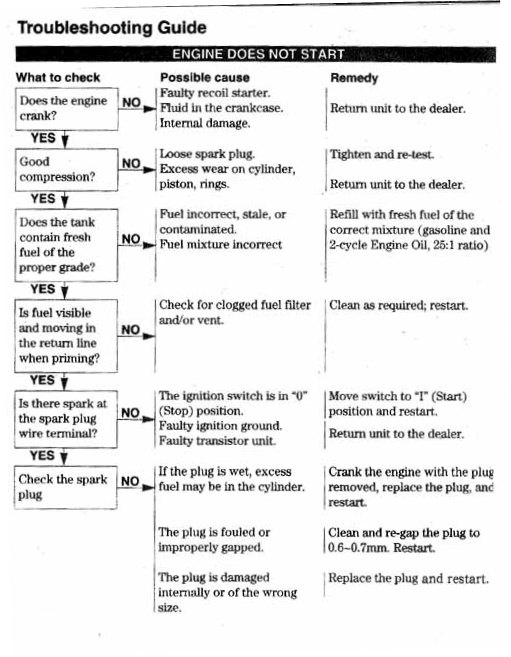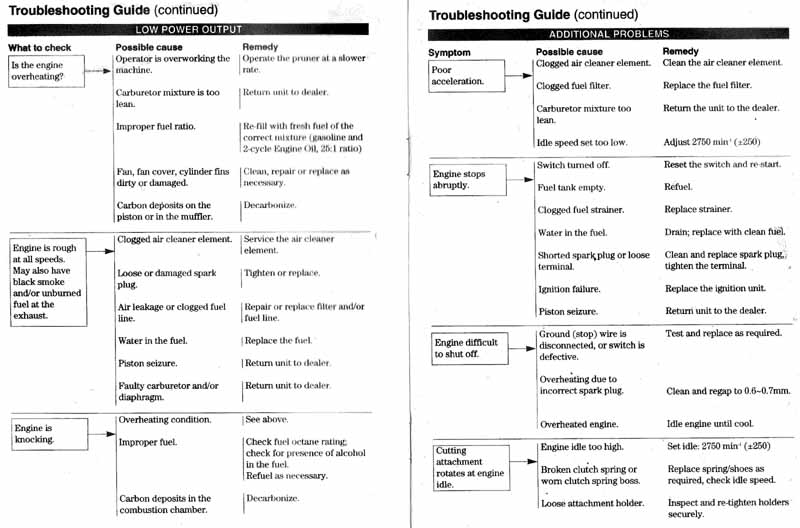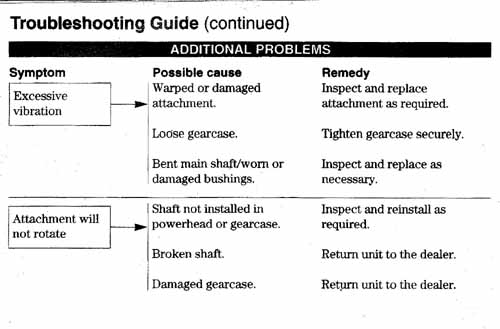

READ THIS FIRST Box Contents Tips Trouble Shoot Chart Specifications Main Site
Support - 2 HP Outboard Engine
Expanded Instruction Manuals, Tips, Troubleshooting
|
Click here for PDF of the Manual Includes details, pictures, parts and specifications |
1) outboard complete, mixing bottle to mix gas with 2-stroke oil (1:25 or 1 part oil for 25 parts gas), tool set (including extra shear pin and head gasket), manual, and safety kill lanyard
Pre-Use Assembly/Prep required:
1) None.
1) Starting. Prime the carburetor by pumping the pump ball on side of cowling. Adjust choke for cold or warm starts. The "on" and "off" refer to air flow. The choke lever should be in the "off" position for cold starts to restrict the airflow and provide richer start mix. Move lever to "on" as engine warms.
2) The included lanyard safety clip must be attached to the stop button on the tiller to allow it to start as the button springs to off automatically when it is not held open by the clip.
3) To prolong the life of the pull unit (recoil starter), try to pull out handle until chord slack is eliminated and there is pull tension on the chord, before you make long pull. Also try to make shorter pulls rather than long pulls that pull chord out fully to stopper. If your unit is not starting easily, does not start, or cuts out during operation, it is most likely caused by a fouled spark plug - even if the plug looks good or has only been run for a short time. The unit is designed to run optimally at FULL throttle all the time with a 1:25 mixture and you will not burn off the oil on the plug if you always run at low throttle. Get a new plug.
4) Metric sizes. All the bolts and heads in the unit are METRIC. You can do most things with the tools that come with the unit.
| Overall length (top of engine to shaft tip) | 92 cm (36 in) |
| Overall width (front to back) | 36.5 cm (14-3/8 in) |
| Overall height (thickness side to side) | 22 cm (8-5/8 in) |
| Transom height | 4.2 cm (1-5/8 in) |
| Shaft Length (top of transom bracket to tip of shaft) | 61 cm (24 in) |
| Weight | 9.7 kg |
| Full throttle operating range | 4000-5500 rpm |
| Maximum output | 1.5 kw (2 HP) @ 5000 |
| Idling speed (in neutral) | 1400-1500 rpm |
| Engine type | 2-STROKE |
| Fuel to Oil Ratio | 25 to 1 |
| Fuel | Regular Unleaded |
| Cooling | Water Cooled |
| Cylinders | 1 |
| Displacement | 43 |
| Bore x stroke | 40*34(1.57*1.34) |
| Ignition system | CDI |
| Control system | Tiller |
| Starting system | Manual/Choke |
| Gear positions | 1 |
| Gear ratio | 27/13 |
| Trim and tilt system | Manual Tilt |
| Propeller | 7-1/4*5-A in |
| Integral fuel tank capacity | 1.1 |
1) Unit does not start. Check the following (and also see the Trouble Shooting Chart at bottom of this page) :
1) Is the
choke set for a
cold start and in when warm?
2) Did you prime the carburetor by pumping the primer ball?
3) Do you have enough gas in the tank?
4) Do you have a good spark plug? A new plug is just a few dollars at a Home
Depot or similar, and may save a lot of time. With 2 cycle engines, the oil in
the mix will build up on the plug - especially if you unit sits between uses. it
can happen in a short amount of time. Even if your used plug shows a spark, is
recent, or has been cleaned, we would suggest having a new one on hand to
eliminate the plug as the problem. If you want to check the spark ignition
system, remove the plug from engine, connect the plug wire to the plug and
ground the side of plug to metal engine housing using pliers with plastic grip
handles so you don't get a shock. Pull the starter cord and watch the plug for a
spark jump. The spark should be bright blue and easy to see. If you have a weak
spark then the ignition system is working but that does not necessarily mean
that your plug is good. You may need a new plug.
2) Overheating.
The engine is water cooled with an impellor in the assembly behind the propellor. If you are not getting water for cooling, try removing the lower propeller gearcase from the outboard shaft and then re-installing, making sure that the thin water supply tube inside the shaft is inserted into the water supply outlet on the gearcase. There is only 2 bolts to remove - one at front top of gearcase and one above propeller under plate. See attached pictures for locations or bolts. You can then just tap out the lower unit with a piece of wood. When the lower unit is put on the leg, it is important that the end of the water tube that runs up inside the leg is inserted properly into the lower unit. It is quite hard to line it up and it is easy to miss the hole in the lower unit and the lower unit will still go back on even though the tube is not inserted.


